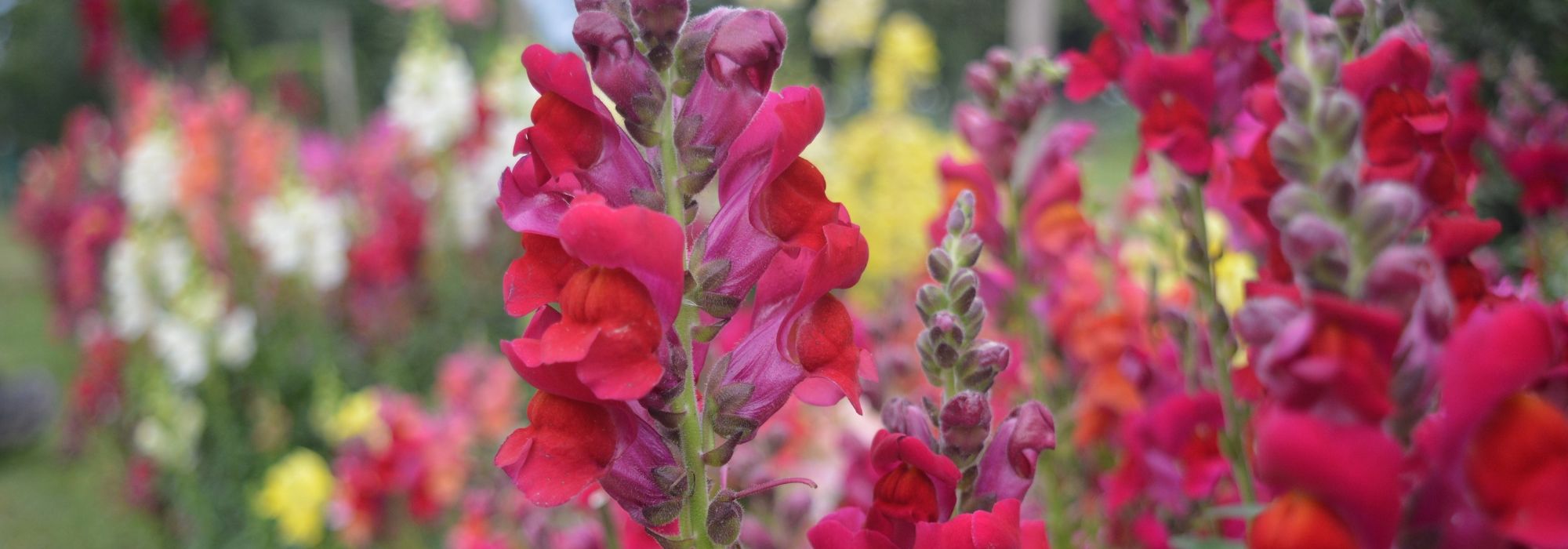
Snapdragon, dragon's mouth: sowing, planting, care
Contents
Snapdragon in a nutshell
- Snapdragon, known as “Gueule de Loup” in French, is a perennial plant most often grown as an annual (because frost-tender) and flowers all summer until first frosts
- Its flowers, gathered in dense, fragrant clusters, are declinate in a great diversity of vivid or soft colours: yellow, pink, white snapdragon…
- Tolerant of summer drought, it prefers well-drained soils where it will self-seed
- Whether dwarf or tall, snapdragon is indispensable in a country garden, in beds, rockeries and sunny borders; it can also be grown in pots
- Its edible flowers make attractive garnishes for salads
A word from our expert
Appreciated since the 16th century for its bright, varied colours and ease of cultivation, Snapdragon, commonly called Gueule de Loup in french, is a safe bet in the garden, especially in country gardens where it self-seeds. It is one of those annual plants that are accommodating, accessible to all gardeners, just like penstemon, a flower closely related to snapdragon.
With charm of wild plants, Gueule de Loup often displays a tousled romance and blooms from June until first frosts in every corner of the garden. Snapdragon is also edible: its flowers, with velvety snouts that scent the air, will enhance both bouquets and summer salads!
Neglected in recent years for their slightly old-fashioned, very ‘vintage’ look, both dwarf snapdragon and large-flowered snapdragon (Antirrhinum majus) are nevertheless among champions of abundant flowering and allow many combinations. White snapdragon, yellow snapdragon or with bright orange petals variegated with scarlet red, the many cultivars offer a multitude of colours, from the most delicate to the most daring.
Annual or perennial, this will depend on climate and soil, as it is a pretty sun-loving plant, tolerant of heat but sensitive to cold. North of the Loire and in heavy soils, treat it as an annual, in mild climates snapdragon can remain in the ground surviving winters that are not too severe. Admittedly not very hardy, it is nevertheless undemanding and rarely prone to disease, provided it is given well-drained soil and plenty of sun.
How to cut faded snapdragon flowers, harvest snapdragon seeds or even take a snapdragon cutting, we answer all these questions in this guide.
Remarkable in garden as in a bouquet, absolutely delightful planted in a pot on the terrace, discover or rediscover this indispensable annual flower and our unique collection of snapdragon seeds!
Description and botany
Botanical data
- Latin name Antirrhinum
- Family Scrophulariaceae
- Common name Snapdragon
- Flowering May to October
- Height 0.15 to 1.20 m
- Exposure Sun
- Soil type All, well-drained
- Hardiness -5°C
Antirrhinum, better known as the Snapdragon, is a perennial plant of the family Scrophulariaceae, like foxgloves and diascias, generally grown as an annual or a biennial in our gardens. Native to western Mediterranean basin, it grows on dry ground, among rocks, and is found in southern half of France where it spontaneously colonises stony paths and gaps in dry stone walls.
The genus includes around forty species but only Antirrhinum majus, the large-flowered Snapdragon, is present in our gardens, and has been since the 16th century. This explains why it is declinated into more than 1,000 varieties classified by height: from dwarf types such as ‘Tom Pouce’, the best known, to tall ones like ‘Madame Butterfly’.
Of very rapid growth, the plant forms within months of sowing a bushy clump with a well-ramified habit, erect or very rarely trailing. More or less compact, the plant reaches 15 cm to 1.20 m in height depending on variety; some display a very low, compact habit such as many hybrids and cultivars of Antirrhinum majus Nanum which produce miniature plants.
Stems erect, simple or branching, often green but sometimes purplish, bear entire, narrow, opposite or alternate, lanceolate to linear leaves, 2 to 8 cm long. They are more numerous at the base and are deciduous. Glabrous, they show a nice green colour of varying intensity. Some varieties such as Antirrhinum majus Nanum ‘Bronze Dragon’ are notable for almost black foliage, an unusual colour for snapdragons, while others such as Antirrhinum majus ‘Black Prince’ display purple-bronze foliage.
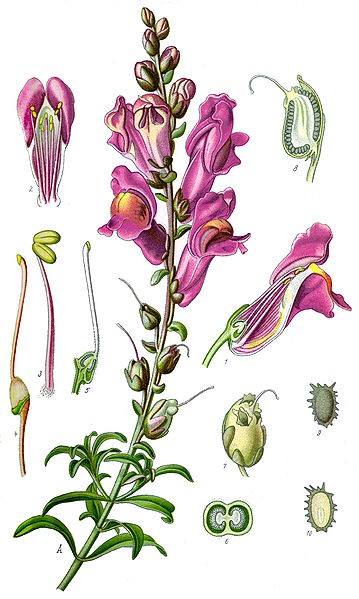
Antirrhinum majus – botanical illustration
Flowering overwhelms the foliage and begins in spring in May–June, continuing until first frosts. Flowers open at stem tips as very dense erect spikes up to 25 cm long, covered with tubular flowers contrasting with the foliage. Their diameter does not exceed 3 cm. Their form with undulate lips is so distinctive that it gave the plant its common name “Snapdragon”. The corolla, made of two lips the lower one pubescent and set in hairy calyces, opens like an animal’s mouth when pinched between forefinger and thumb, taking on appearance of a gaping snout swollen at the base.
Most often single, some Snapdragons (‘Double Madame Butterfly Mixed’) are distinguished by fully double flowers, resembling azaleas.
These bilabiate corollas are available in an infinite palette of bright, luminous hues. Solid, bicoloured, graduated or randomly splashed and spotted, they display shades from the palest to the most intense, ranging from pure white to velvety blood red, through every shade of pink, yellow and coppery orange.
They give off a delightful, light sweet scent. The melliferous and nectariferous flowering is much visited by bumblebees and butterflies.
Large-flowered snapdragons make excellent cut flowers, lovely in brightly coloured bouquets.
These clusters of flowers develop into small fruits, capsules with two locules that contain tiny seeds able to self-seed easily in the garden, a boon for this short-lived perennial.
Not very hardy (-7°C), Snapdragon is therefore often grown as an annual or a biennial in our climates, particularly north of the Loire, although with a mild winter it may persist and remain perennial.
The Snapdragon is undemanding and will be content with well-drained soil, even calcareous, and simply plenty of sun.
This flower, so common in country gardens and familiar in parsonage gardens, is also indispensable in wild and naturalistic gardens, scented gardens, or cottage gardens, where it brings colour, cheer and scent. Depending on variety height, it is easy to place in borders, flower beds, rock gardens, planters and hanging baskets.
Snapdragon flowers are edible and have a strong, slightly bitter flavour reminiscent of endive; they are used in salads or candied.
Read also
Best edible flowers for the gardenMain species and varieties
Large-flowered snapdragon, species most common in our gardens, has given rise to many cultivars that offer a wide choice of colours and heights. The varieties of Snapdragons are available by size: dwarf snapdragons (Antirrhinum majus Nanum) not exceeding 30 cm such as ‘Frosted Flames’, medium varieties 30 to 60 cm (‘Black Pince’), and tall snapdragons 70 to 120 cm like ‘Madame Butterfly’. This diversity allows a multitude of uses, in bouquets, as edging or at the back of flower beds but also in tubs and planters. The largest varieties are perfect for cut flowers.
All display exceptional floribundity, good drought tolerance and disease resistance.

Snapdragon Madame Butterfly Mixed Seeds - Antirrhinum majus
- Flowering time July to November
- Height at maturity 80 cm

Snapdragon Black Prince Seeds - Antirrhinum majus
- Flowering time July to October
- Height at maturity 45 cm

Dwarf Snapdragon Frosted Flames Seeds - Antirrhinum nanum
- Flowering time July to November
- Height at maturity 45 cm

Snapdragon Purple Twist F1 Seeds - Antirrhinum majus
- Flowering time July to October
- Height at maturity 90 cm

Snapdragon Royal Bride Seeds - Antirrhinum majus
- Flowering time July to September
- Height at maturity 65 cm

Antirrhinum majus Bronze Dragon - Dwarf Snapdragon seeds
- Flowering time July to November
- Height at maturity 45 cm

Trailing Snapdragon Chinese Lanterns F1 Seeds - Antirrhinum pendula multiflora
- Flowering time July to November
- Height at maturity 40 cm

Snapdragon Lucky Lips Seeds - Antirrhinum majus
- Flowering time July to September
- Height at maturity 60 cm

Antirrhinum majus Circus Clowns
- Flowering time July to November
- Height at maturity 45 cm
Discover other Antirrhinum - Snapdragon
View all →Available in 0 sizes
Available in 1 sizes
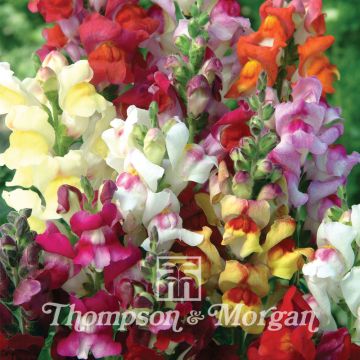
Available in 1 sizes
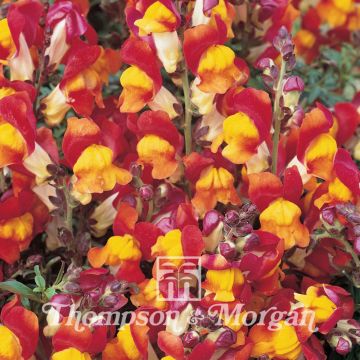
Available in 1 sizes
Available in 2 sizes
Available in 1 sizes
Available in 1 sizes
Available in 1 sizes
Available in 1 sizes
Available in 1 sizes
Planting
Where to plant snapdragon (muflier or gueule de loup)?
From its Mediterranean origins, the snapdragon (muflier or gueule de loup) has retained a strong sensitivity to cold. Annual or perennial, depending on climate and soil, it is not very hardy and struggles with temperatures below -5–-7°C. Although it flowers right up to the frosts, it is therefore often grown as annual or biennial. However, it can survive in our regions with mild winters and regrow in spring.
Undemanding, it thrives in all soils, even calcareous or stony ones, preferring well-drained ground. It requires full sun or light partial shade for optimal flowering. It proves fairly tolerant of summer drought. However, its roots will not tolerate excess water, which can cause them to rot.
Snapdragon (muflier or gueule de loup) is a very versatile annual plant that holds its own up to the limits of winter, in cottage gardens, in flowering prairies, and as backdrops to informal borders for the taller varieties. Semi-dwarf and dwarf snapdragon varieties will colour borders, form tapetum of flowers in very sunny rockeries or flower pots and window boxes on the terrace in summer.
Large-flowered or dwarf, snapdragon even slips into the vegetable garden where its long-scented flowering attracts pollinating insects such as bees and bumblebees.
When and how to sow snapdragon?
When to sow and plant snapdragon?
Sow from January to March under cover your snapdragon seeds, then prick out into buckets and plant in April, May or even June depending on region. You can also sow snapdragon in September. After pricking out the young plants into buckets to overwinter under cover, plant out following spring.
You can also sow snapdragon seeds directly outdoors in April–May in mild-climate regions; flowering will then be later.
How to sow snapdragon seeds?
Successful snapdragon sowing under cover
Snapdragon (Antirrhinum) is frost-tender and should be sown from January to March under warm cover at 20–25 °C until germination. Flowering will then occur between June and October. Discover our tips and tricks to successfully sow annual seeds directly in ground or in trays on our blog!
- Sow snapdragon seeds in a tray on surface of a good, well-draining seed compost
- Cover seeds lightly with compost kept slightly moist
- Keep warm in a plastic bag and in light during germination
- When young plants reach 2 leaves stage, prick them out into 8 cm buckets
- Pinch out main stems and plant out young plants once risk of frost is past and when outdoor temperature exceeds 18 °C
- Space young plants about 10 to 40 cm apart
- Water to ensure establishment
In open ground
- After frosts, in April–May depending on region, in well-drained, warmed soil, sow broadcast without burying snapdragon seeds
- Keep soil moist until germination
- After emergence, between 10 and 21 days, thin out the ranks leaving about 10 to 40 cm between each young plant
Planting Snapdragons
A fairly close planting will always look splendid in beds as well as in planters! Plant snapdragons in groups of 7 to 9 buckets per m², allowing spacing of 25 to 40 cm for tall varieties and 10 to 20 cm for dwarf snapdragons.
In open ground
Transplant snapdragon young plants once risk of frost has passed; set out between May and July.
- Dig over soil well to loosen it
- Dig a hole 2 to 3 times wider than root ball
- Spread gravel or clay pebbles at bottom of planting hole
- Place root ball in centre of hole, collar at soil level
- Backfill
- Firm down with foot
- Water generously
More advice on how to plant our annual plants correctly on our blog!
Planting snapdragons in pots or planters
- Place a good layer of gravel or clay pebbles in base of container
- Plant root ball in a free-draining mix of 80% potting compost and 20% river sand
- Water generously at planting
Snapdragon care and maintenance
Snapdragon is truly the carefree annual, easy to grow and maintain. Native to arid lands, snapdragon is fairly resistant to lack of water: water generously at planting then moderately and especially during hot weather to support flowering. Always water at the base of the plant and not on the foliage because snapdragon is susceptible to powdery mildew.
Water potted snapdragons more regularly as soon as surface soil is dry and apply fertiliser for flowering plants to support summer flowering.
Pinch the main stem when young plant reaches 15 cm to promote branching.
If necessary, stake tall varieties, especially in windy situations.
Snapdragon does not require pruning: simply remove faded flowers as they fade to encourage new flowers and extend flowering period. In case of drought, flowering may stop or plant may be less floriferous.
After flowering, let snapdragons set seed in place; they will self-seed freely and abundantly from year to year. But beware of being overrun as they can multiply very quickly: cut back clumps after flowering if you wish to avoid these self-seedings.
- In mild climates, protect plants with a thick mulch of dried leaves.
- In harsh climates, pull up young plants before severe frosts.
You can try to preserve your potted plants: cut back clumps and shelter them from severe frosts over winter; you may see them reshoot the following spring.
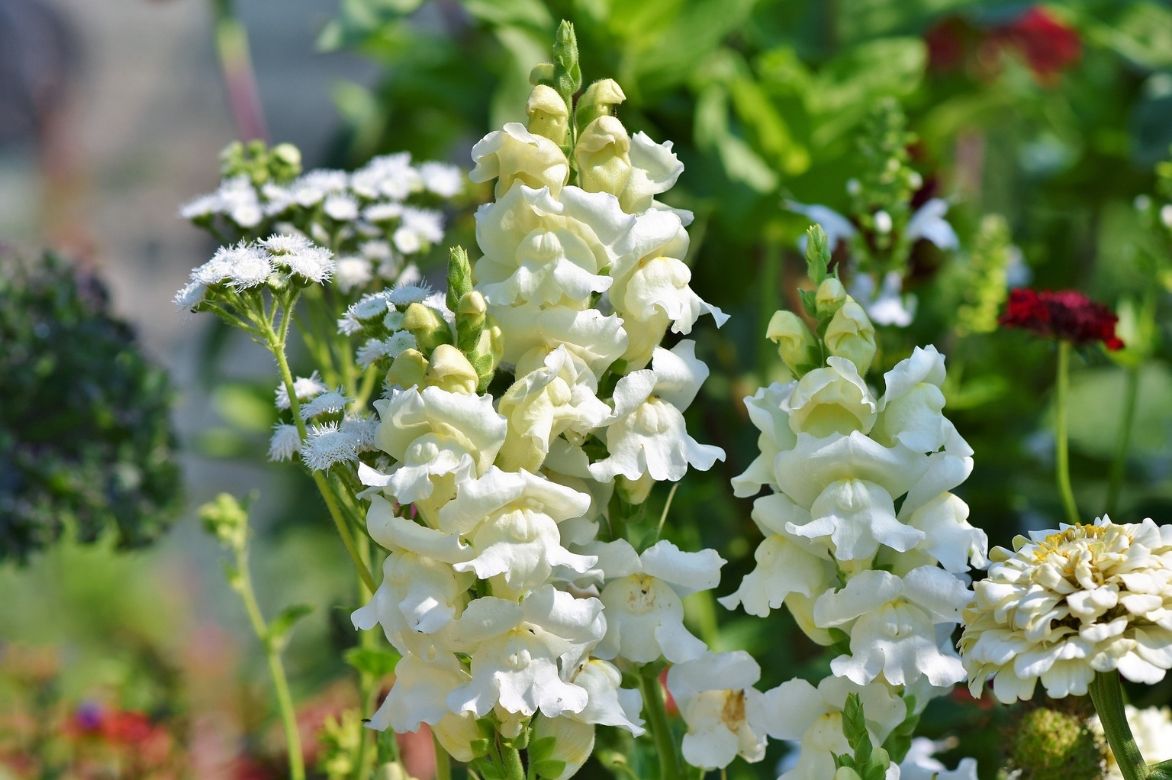
Potential diseases and pests
Snapdragon is a vigorous annual, but it is frequently subject to powdery mildew, a white down that appears on the foliage. Water at base of plant, avoiding wetting the foliage, and discover our solutions to prevent powdery mildew.
In late summer, it can be infested by aphids: treat with soapy water.
Excess moisture will rot the plant; ensure good drainage.
Snapdragon is fairly susceptible to rust, which leaves orange or brown pustules on the leaves: remove affected parts and spray with horsetail decoctions or nettle manure.
Slugs are also very fond of young foliage; see our tips for combating gastropod attacks.
Multiplication
Snapdragon multiplies very easily but is rarely true to type from spontaneous sowing. Sowing under cover is easy (see above “when and how to sow snapdragon seeds successfully”). If you have harvested and stored snapdragon seeds from your dried flowers, you can sow them the following year; otherwise choose from our unique collection of annual snapdragon seeds. Be careful, these seeds are as fine as dust, barely visible to the naked eye!
Taking a cutting of snapdragon
Cuttings of snapdragon are also possible at the end of summer: take stems about 15 cm long and plant them in buckets in a sandy potting compost mix. Keep them in bright light at 20-25 °C. Pot on the following spring after frosts.
Companion planting with snapdragons
The snapdragon or gueule de loup is a bright annual plant that makes its mark in all natural and wild gardens and country gardens. Familiar from our grandmothers’ gardens, it is essential in a cottage and scented garden. Within a single season it gives summer scenes a often-retro charm.
Depending on varieties, it will bring a fresh, romantic white or pink touch, or be exuberant in multicoloured combinations. It pairs easily with many annuals, summer-flowering perennials and cottage perennials.
In the heart of a colourful bed, mix large-flowered snapdragons with annuals such as Nigella damascena, Cosmos, California poppies or dwarf chrysanthemums or with perennials rich in colour such as dahlias, coreopsis, cannas or echinaceas for flowering right up to first frosts.
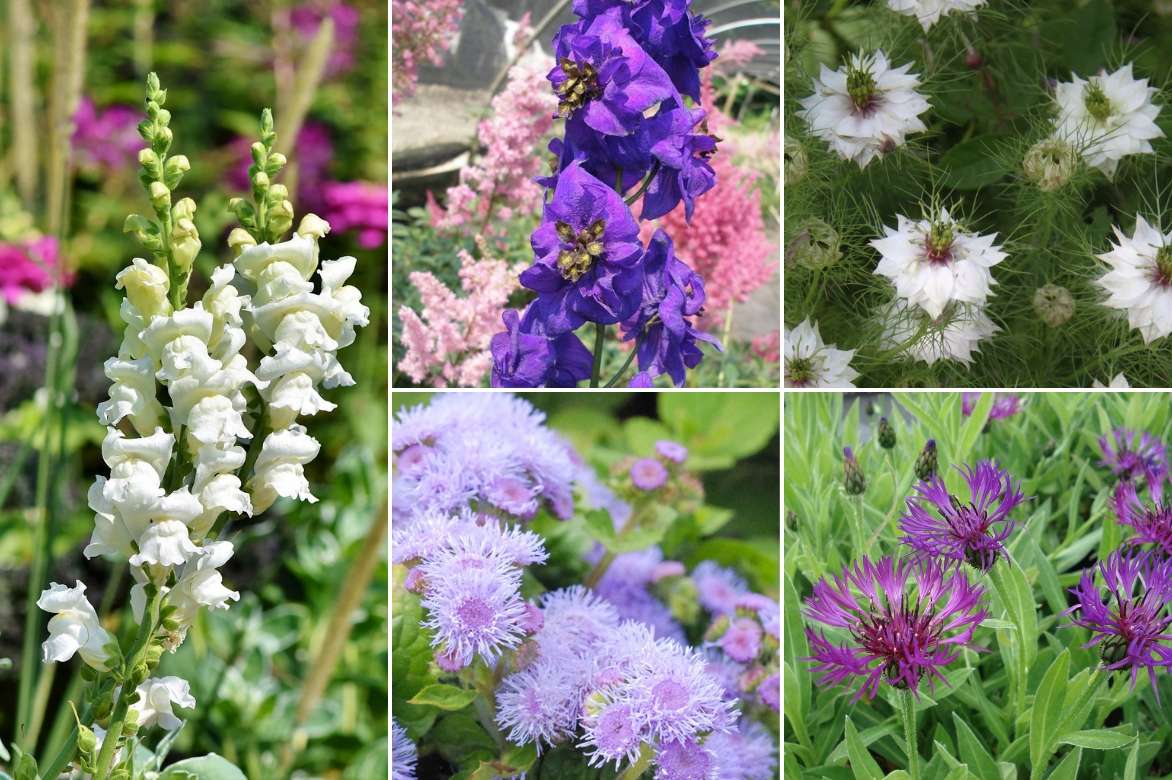
An idea for a combination: Antirrhinum majus ‘Royal Bride’, Delphinium ‘Pacific Black Knight’, Nigella damascena, Ageratum ‘Blue Mink’, Centaurea montana
In a flourishing mixed border, it happily combines with coleus, agastache, wallflowers, perennial flax or linarias, all equally easy to grow.
In a scented garden, surround it with dianthus plumarius, marjoram and wallflowers (Erysimum).
Its spikes laden with flowers will rise gracefully among bushy perennials such as hardy geraniums, knautias, fennel and asters. Tone down the colours of the brightest varieties by pairing them with the grey foliage of wormwoods, euphorbias, Eryngium, a Thymus hirsutus, an Allium senescens subsp. montanum and with other annuals in pastel shades such as penstemons, tobaccos, sweet alyssum, scabious, gauras, angelonia or white osteospermum.
In a romantic garden, pair snapdragons with clematis or roses, they will add lightness.
They will mingle among the stones of a rockery with santolinas and with light ornamental grasses such as Stipa tenuifolia and Miscanthus.
In containers, combine dwarf snapdragons with petunias, diascias, surfinias or zinnias.
→ Discover more ideas for pairing snapdragons in our advice sheet!
Useful resources
- Discover our ideas for pairing snapdragons
- Available as plug plants or seeds, discover our collections of annual flowers!
- Low-maintenance, flowering for nearly six months, snapdragons are a must in a country garden
- Include snapdragons in a colourful mixed border or in the vegetable garden where they will attract pollinators!
- And garnish your salads with their edible flowers!
- Subscribe!
- Contents
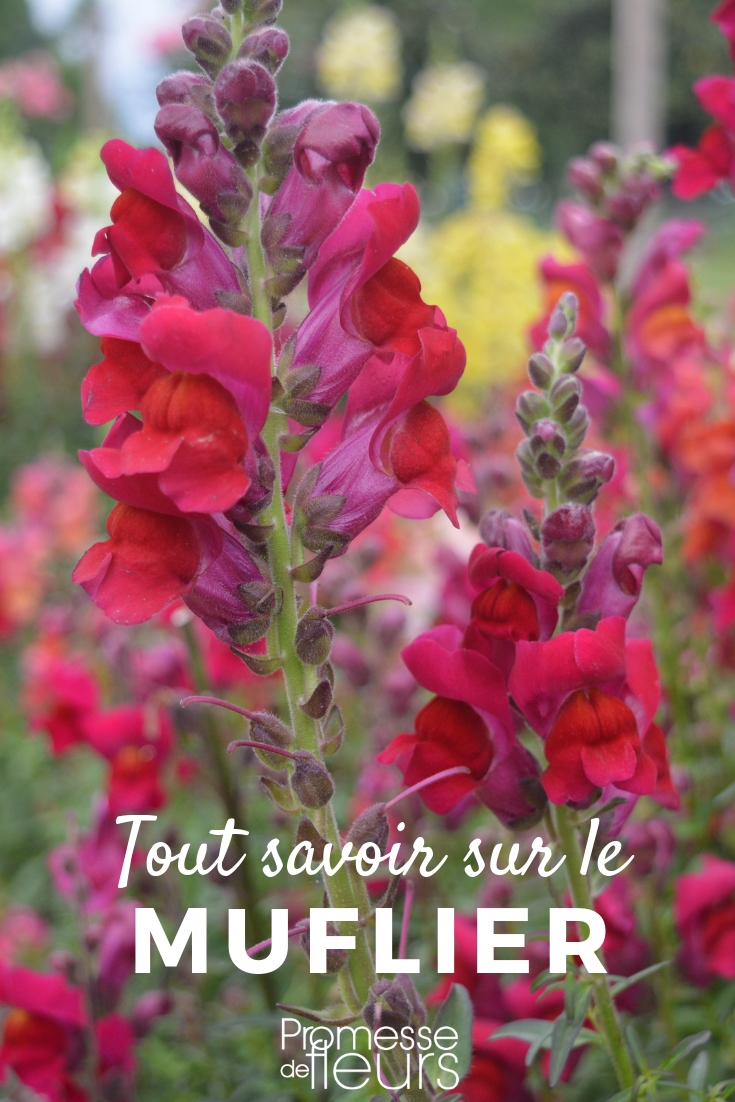

































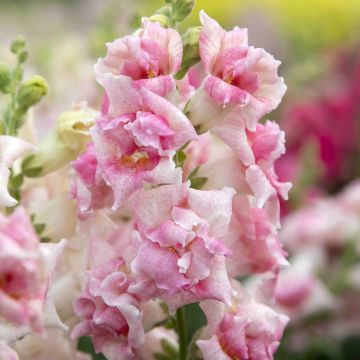
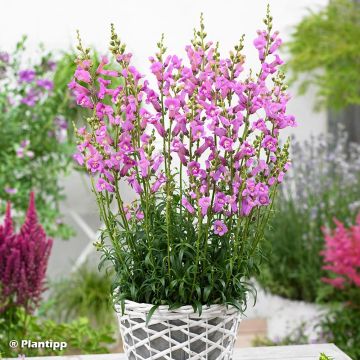
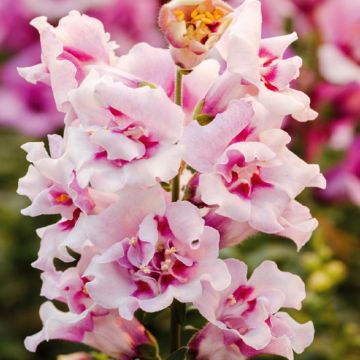
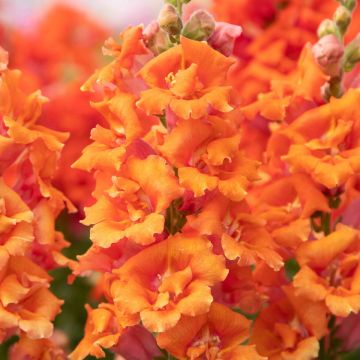
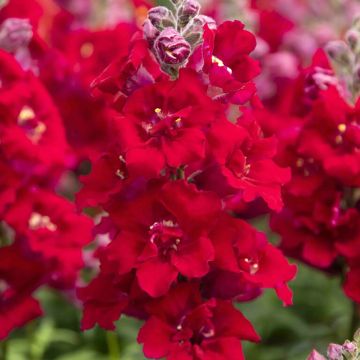
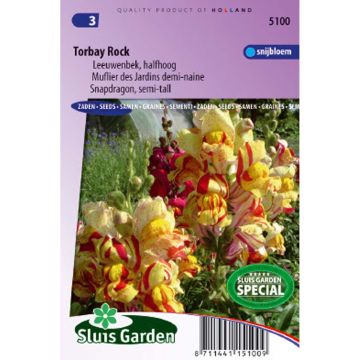
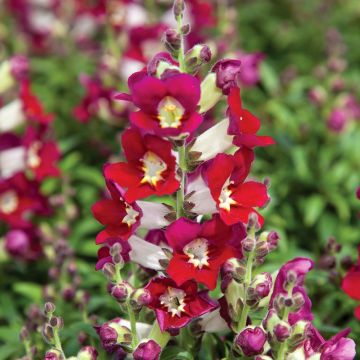
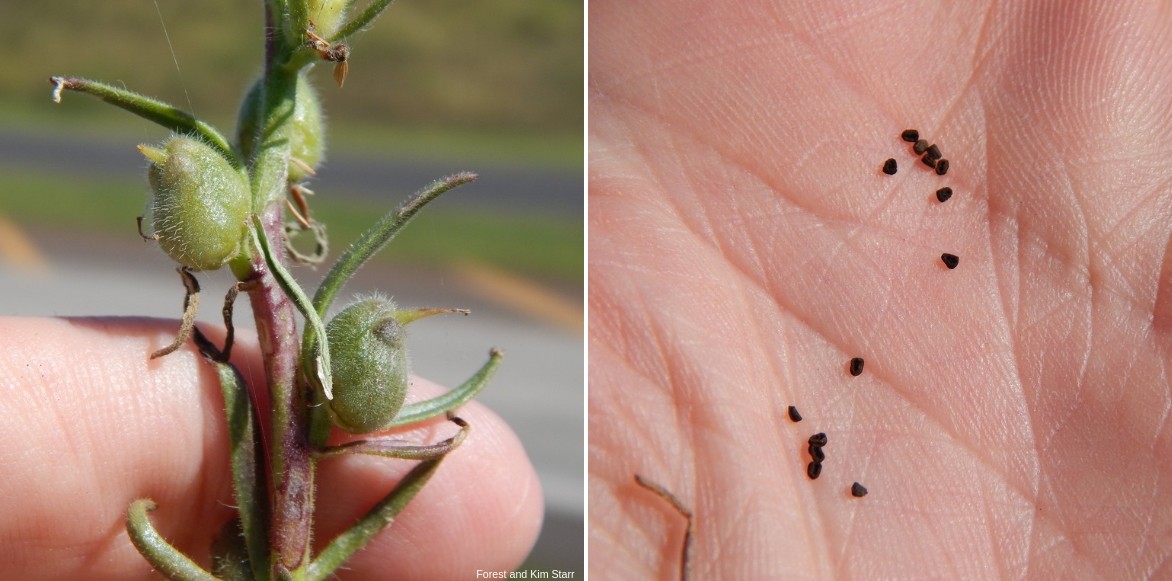
Comments